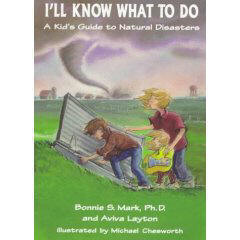| |


Teaching Hand Washing
Information and Resources For Parents & Caregivers
Teaching kids about hand washing is not just
important to keep them healthier in childhood... but all through life.
The sad fact is that many, many adults don't seem to believe that hand
washing is important, including the adults who prepare our food!
Middle school teacher
John Lundgren
found this out for himself when he discovered that the same guy he'd seen
earlier in the restroom -- a guy who left without washing his hands -- was about
to serve him food in the mall food court! The experience prompted him to
create his own website devoted to this important topic.
But many teachers, and parents, have had their own experience with
lapses in hand washing hygiene, including the huge absentee problem that
is generated by the unchecked spread of germs. Oftentimes the
illness that is spread is a mild to moderate form of the common cold or
the flu. But from time to time we do hear about outbreaks of much
scarier illnesses, like meningitis. And with scientists warning
about the potential for new, more serious, flu strains and strange
hybrid diseases, we owe it to the children in our care to promote the
effective and deceptively simple skill of hand washing.
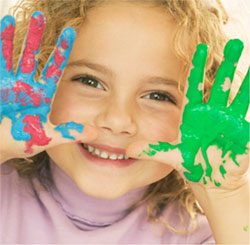 Tips for
Getting
Young Children Tips for
Getting
Young Children
To Wash Effectively
The best way to teach
anything to young children is by making it fun, making a game out of it
--
and by teaching and modeling what to do through your own behavior.
Make It Kid Friendly and Fun
Try some of these...
 |
Have the hand washing area set up for comfort --
provide a child safe stool or
low wash basin.
|
 |
Have fun soaps and scrubbers. (Be aware that fingernail
scrubbers can spread germs if not properly maintained and
are better suited to the home environment than classrooms.)
|
 |
Put "no touch" items out of reach and out of sight.
|
 |
Create an appealing environment through kid-friendly decor
like Sponge Bob or Little Mermaid.
|
Make It Into A
Game
 |
Have child
sing a fun song while washing to help mark the time, so
he/she knows just how long to wash (15-20 seconds). |
 |
Keep a hand
washing chart and encourage the child to see how many squares
he/she can fill in. (The emphasis should be positive,
never shaming -- "Look what you did, wow!") |
 |
Refer to a
printable poster, or homemade poster, that shows the proper
steps for hand washing. Make a game out of following
each step. You can approach it quiz style, "What
do we do first? ....And what's Step Two?" Or just be
silly, "Okay, first we ....dry our hands-- right? No?" |
Teaching
Tips for Good
Hygiene Instruction
Learning
Principles To Keep In Mind
 |
Keep in mind
that young children are visual and kinetic learners.
This means they learn best by also seeing and doing -- rather
than just hearing.
|
 |
Have your
young child watch you or another child wash hands, while
you talk about what to do. |
 |
Then have your
child do it, while you again explain the basic steps. |
 |
Don't forget
to keep it fun and simple -- dDon't try to cram in
all the facts at once. Just start with the bare basics, and
then add different pieces of information in later
installments.
(Note that 1st-3rd and 4th-6th
graders will each have higher levels of attention span and
greater tolerance for getting a lot at once.)
|
 |
Small children
learn best through repetition and reinforcement. You
can follow up your first lesson with:
-
story books about germs
and hand washing;
-
looking at pictures of germs;
-
making
pictures or posters (collages are great for younger preschoolers who
can glue stick but not draw well); and
-
by acting out silly little
skits about getting germs on your hands, hand washing,
getting sick, and etc.
|
Modeling
What to Do-- And When to Do It
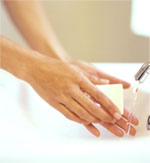 Always
remember that small children are impressed by what we do
(enjoy it while it lasts!), and that all children learn
as much from what we do than what we say. So if you want
to teach the importance of hand washing...wash your hands
consistently at all appropriate junctures! Always
remember that small children are impressed by what we do
(enjoy it while it lasts!), and that all children learn
as much from what we do than what we say. So if you want
to teach the importance of hand washing...wash your hands
consistently at all appropriate junctures!
Parents &
caregivers should wash their hands:
 before preparing, serving, or eating food before preparing, serving, or eating food
 after caring for a sick child (blowing their noses or wiping eyes after caring for a sick child (blowing their noses or wiping eyes
 after diapering a child after diapering a child
 after cleaning up a mess after cleaning up a mess
 after helping a child with toileting after helping a child with toileting
 after cleaning up spills after cleaning up spills
 after other cleaning activities after other cleaning activities
 after smoking after smoking
Kids can't
always see what we do, so be sure to talk about it.
Tell a little story about when you wash your hands-- about
something icky you touched and how you washed afterwards.
Or mention loudly how you are going to need to go wash hands
before helping prepare snack. And don't forget to tattle on yourself once in a while,
"Oops! I almost forgot to go wash my hands first."
Sometimes sharing about mistakes you've made (in a funny and
forgiving way) and talking about why you will do it
differently is more effective than pretending you do the
right thing all the time. After all, who can relate to
someone who's perfect!
Point out other hand
washing role model, such as doctor, nurses,
and dentists, as well as people who work in restaurants, etc.
Wash hands
together! Washing hands when the children wash
up sends a stronger message than just telling them that they
should do it.
Have a
Routine
Make hand
washing a regular part of toileting, meal time, diaper
changing, and etc. Both for yourself and for the
children. This will help everyone remember because
it will become second nature. For example, when children
arrive at school or get ready for lunch, they know that the
first thing they must do is wash hands.
Safety
Considerations
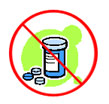
Child
Proofing
Don't forget
to put locks on bathroom cabinets that contain medicines,
cleaners, or anything else that could harm a child.
Talk to your child about why these areas are off limits and
what to do if they find anything dangerous laying about
(meds, razor, etc.).
Check Your Water
Temperature
Please
remember to talk to children about the dangers of very hot
water and to turn your water heater down! It should
never be higher than 120°F.
Note that some sources say that 130°F is safe enough, but as
you can see below, the difference between 120°F and
 temps
nearer to 130°F is huge, in terms of how much harm can be
done to a child. Furthermore, 120°F should be more
than sufficient to run your dishwasher and laundry. temps
nearer to 130°F is huge, in terms of how much harm can be
done to a child. Furthermore, 120°F should be more
than sufficient to run your dishwasher and laundry.
The
following chart shows just
how dangerous hot water can
be.
Temperature Time to Cause
of Water a Bad Burn
-------------------------------------
150°F (66°C) 2 seconds
140°F (60°C) 6 seconds
125°F (52°C) 2 minutes
120°F (49°C) 10 minutes
-------------------------------------
for more
info
|
A Review for
Adults:
How
to wash your hands properly
Procedure
-
Use soap and running water. Warm to hot water is
best.
-
Wet hands thoroughly and lather with soap.
-
Rub hands vigorously for at least 10-15 seconds as
you wash them.
-
Pay attention to the backs of hands, wrists, between
fingers, and under fingernails.
-
Rinse hands well under running water.
-
Dry hands with a disposable paper towel or a clean
towel. To minimise chapping (reddening, roughening
or cracking of skin) of hands, pat dry rather than
rub them. Electric hand driers may be used. If cloth
towels are used, select a fresh towel each time, or
if a roller towel is used, select a fresh portion of
towel.
-
Turn off the tap with the used towel.
-
Use skin lotion, if necessary, to prevent dry
cracked skin.
-
If you use skin lotion, it should be rinsed off
before preparing or handling food.
The Role of Hand
Sanitizer Gels
Handwashing No Longer Necessary?
Alan Greene MD FAAP
The days
of "wash
your hands before dinner" are (at least partially) coming to an end!
True,
many infections are spread by the hands.
True, we have been urging people to increase handwashing to prevent these
infections. True, even in hospitals people have not been following guidelines
adequately. (I was seen by a doc in an ER recently who did not wash between
examining the contagious person next to me and examining me.)
But on November 9,
2001 the CDC released draft guidelines for hand hygiene in hospitals and other
healthcare settings, calling for a switch AWAY from handwashing, toward using
alcohol-based, waterless antiseptic gels on the hands (unless the hands are
visibly dirty or contaminated).
When compared to soap and water, or
antibacterial soap and water, the hand
gels are MORE effective and LESS irritating or drying. They are even an
improvement over the time-honored 'surgical scrub'. They are also more
convenient and easier to get kids (and doctors) to use.
The CDC recommends that
waterless antiseptic gels be kept at all patient bedsides, and that individual
pocket-size containers be carried by all healthcare personnel. I admit that we
have already made this switch in my family -- even before the studies came out
http://www.drgreene.com/21_877.html
|
Additional Resources
 Please note that
some of the
resources in this section require the Adobe Reader for pdf files.
If you don't already have this program, you can
download it here. Please note that
some of the
resources in this section require the Adobe Reader for pdf files.
If you don't already have this program, you can
download it here.
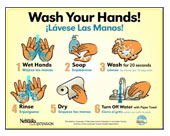 Hand Washing Poster.
Perfect to print, laminate, and hang in your restroom. Hand Washing Poster.
Perfect to print, laminate, and hang in your restroom.
Visit the site to find spanish language versions as well as a
coloring page version.
Healthy Schools Healthy People
It's a SNAP program to improve student handwashing, reduce absenteeism,
and help the school community stay healthy. Visit this
site for activities to help elementary and middle school
students better understand the spread of germs and the role
of good handwashing and related health practices.
Create your own printables and handouts. Learn how your school can earn an award to reward and
acknowledge student and staff efforts.
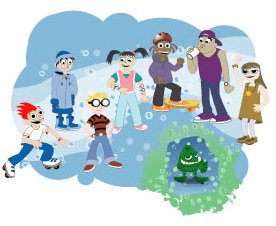
Scrub Club resources for teachers.
Fun printables and other materials in English, Spanish, and French.
Surf the site for games, webisodees and more to accompany your
lessons and discussions.
Teaching Hand Hygiene
is a
resource from the Minnesota Department of Health that includes
curriculum ideas and print outs for various age groups from
preschool to high school.
http://www.health.state.mn.us/handhygiene/curricula/
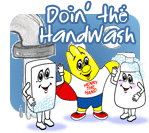
Henry
the Hand this site is packed with everything you need to
launch a handwashing campaign at your elementary school.
Free printable
coloring book and activity booklet for children
and even more
free stuff for those who fill out the simple registration form.
The Henry Hand Videos below are suitable to share with children learning
about the importance of handwashing.
 More
Helpful Handwashing Videos More
Helpful Handwashing Videos
An overview of basic principles with a really
catchy song.
This video may be a little too
germaphobic but it makes up for it by being
hilarious.
May be especially helpful
for those children who tend to pick up "floor food" and
put it in their mouths.
However, be sure to discuss the fact that in
real life, we
would never just leave the
water running like the woman in the hand washing
sequence.
Please, don't waste water!
For parents and educators. Learn more about Dr. Will Sawyer's campaign to educate
the public about the "T Zone" and how following his guidelines can reduce sickness
in your home, school, and work place.

EARTH'S KIDS

Send us some email!
|
The Hidden World of Deadly Germs
Experiments
Activities
Bubble Fun
History of Soap
Soap Making Crafts
Hand Washing Songs
Coloring
Books
For Parents
& Teachers
Hand Washing 101:
|



 Tips for
Getting
Young Children
Tips for
Getting
Young Children Always
remember that small children are impressed by what we do
(enjoy it while it lasts!), and that all children learn
as much from what we do than what we say. So if you want
to teach the importance of hand washing...wash your hands
consistently at all appropriate junctures!
Always
remember that small children are impressed by what we do
(enjoy it while it lasts!), and that all children learn
as much from what we do than what we say. So if you want
to teach the importance of hand washing...wash your hands
consistently at all appropriate junctures!
 temps
nearer to 130°F is huge, in terms of how much harm can be
done to a child. Furthermore, 120°F should be more
than sufficient to run your dishwasher and laundry.
temps
nearer to 130°F is huge, in terms of how much harm can be
done to a child. Furthermore, 120°F should be more
than sufficient to run your dishwasher and laundry. Hand Washing Poster
Hand Washing Poster
 More
Helpful Handwashing Videos
More
Helpful Handwashing Videos 
